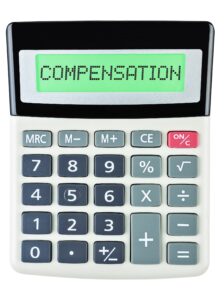By Cat Halloway. Last Updated 17th February 2025. Have you been injured as a cyclist in an accident because another road user, such as a driver, breached their duty of care? If so, you might be eligible to make a personal injury claim and seek compensation. Throughout this guide, we discuss the eligibility criteria that need to be met for you to have valid grounds to pursue legal action as well as how bicycle accident claim payouts awarded in successful claims are calculated.
Additionally, we discuss the duty of care road users owe one another and how a breach could potentially lead to you suffering harm as a cyclist. You can also find information on how to prove a cycle accident claim with different types of evidence.
Finally, we discuss the benefits of working with a No Win No Fee solicitor and the terms under which they could offer their helpful services.
Our team can help you with any questions you have regarding your potential claim. To get in touch with them for free advice, you can:
- Call now on 0333 000 0729
- Speak with an advisor via our Live Chat pop-up.
- Fill out our online ‘Contact Us‘ form.

Select A Section
- How Are Bicycle Accident Claim Payouts Calculated?
- Who Could Claim Bicycle Accident Claim Payouts?
- Examples Of How Negligence Could Lead To Bicycle Accident Claims
- How Do You Prove Your Cycling Accident Claim?
- Claim Compensation For A Cycling Accident With A No Win No Fee Solicitor
- Further Resources On Making A Personal Injury Claim
How Are Bicycle Accident Claim Payouts Calculated?
When calculating bicycle accident claim payouts, consideration is given to many factors including:
- How severe the injuries caused are.
- The treatment needed and whether considerable medical care was needed and will continue to be needed in the future.
- The recovery period.
- How much the injuries have impacted your overall quality of life.
As such, awards can vary on a case-by-case basis with more serious injuries typically being awarded more compensation. Generally, though, settlements awarded in successful personal injury claims can consist of up to two heads of loss. These are general damages and special damages.
Firstly, general damages compensate for the pain and suffering you have experienced due to your injuries. This can either be physical injuries, mental injuries, or both. To calculate this head of loss, reference can be made to a document called the Judicial College Guidelines (JCG) which contains a list of guideline award brackets corresponding to different injuries varying in severity level.
Furthermore, you might be invited to attend an independent medical assessment as part of the claims process. In doing so, a medical report detailing the full extent of your injuries can be generated and used alongside the JCG to help value the general damages portion of your payout.
Compensation Table
The following table contains figures from the JCG, apart from the first entry. Please only use the figures as a guide because compensation amounts will vary depending on the unique circumstances of your case.
| Injury | Severity | Notes | Guideline Award Brackets |
|---|---|---|---|
| Very Severe Multiple Injuries With Financial Losses | Very Severe | Compensation for the mental and physical impacts of multiple injuries of a very severe nature as well as any financial losses incurred, such as lost income, travel costs, and medical expenses. | Up to and above £1,000,000 |
| Brain Damage | Very Severe | The person needs full-time nursing care due to poor language function, double incontinence, and little evidence, if any, of the person being able to meaningfully respond to their environment. | £344,150 to £493,000 |
| Paralysis | Paraplegia | The award given will depend on different factors, such as the degree of independence as well as the person's age and life expectancy. | £267,340 to £346,890 |
| Back | Severe (i) | Spinal cord and nerve root damage. | £111,150 to £196,450 |
| Amputation of Arms | Loss of One Arm (i) | Amputation at the shoulder. | Not Less Than £167,380 |
| Leg | Amputation (iv) | Below-knee amputation of one leg. | £119,570 to £162,290 |
| Foot | Amputation of One Foot | Due to the loss of the ankle joint, this claim is treated similarly to a below-knee amputation. | £102,470 to £133,810 |
| Other Arm Injuries | Permanent and Substantial Disability | Serious fracture in one or both arms. It will result in a significant permanent disability, either cosmetic or functional. | £47,810 to £73,050 |
Special Damages In Cycle Accident Claims
Special damages seek to compensate for any finances incurred due to the accident in which you were injured. Some examples of the costs you could claim back under special damages are:
- Due to the nature of your injury, you have had to take taxis or buses to the hospital for treatment because you can no longer ride your bike or drive. Keeping a receipt/evidence of these travel expenses could help you claim them back.
- You suffered broken bones in the accident, meaning you must take time off work. This results in a loss of earnings, meaning you struggle financially for the time you are off. You could claim these lost wages back if you provide payslips to prove the loss.
Call our team on the number above to discuss what other monetary losses you could potentially be compensated for, such as medical costs and domestic care costs. They can also provide a free valuation of your claim and help you understand what you could potentially be owed.

Who Could Claim Bicycle Accident Claim Payouts?
The first step in claiming bicycle injury compensation is establishing that negligence occurred. For the purposes of a personal injury claim, negligence means:
- Someone owed you a duty of care
- They breached this duty
- As a result, you were injured
While using the roads, cyclists, drivers, and pedestrians alike, all owe each other a duty of care. To uphold this duty, they need to make sure that they comply with the Road Traffic Act 1988 and the Highway Code, and prevent causing harm or damage to themselves and others.
For example, if a car veered into a cycling lane and knocked you off your bike, causing a head injury, then you could potentially be eligible to pursue compensation. This is because, in this case, the driver breached their duty of care, and you suffered an injury because of this.
However, if you were injured because you cycled through a red light at a junction and were hit by a car that had right of way, then you would be unlikely to make a successful claim. This is because you breached your duty of care, and not the other way around.
To learn more about claiming bicycle accident claim payouts, get in touch with our friendly team today.
Examples Of How Negligence Could Lead To Bicycle Accident Claims
Bicycle accident claims are a type of personal injury claim made after cycling accidents and bicycle accidents in which a cyclist has been injured because of another road user breaching their duty of care. Examples of how a bicycle accident could occur leading to injury include:
- You may have been a cyclist hit by a car due to the driver failing to check their blind spot before pulling into the road. As a result, you may have sustained a head injury and broken bones, such as a broken pelvis, in a cycling accident.
- When crossing on a toucan crossing, you may have been hit by a bus driver who failed to stop. As a result, you may have sustained a serious spinal injury leading to paralysis as well as PTSD due to the life-changing impact of the harm you suffered.
Call our team to find out more about cycling accident claims and whether you could seek compensation after being injured as a cyclist in an accident caused by another road user failing to adhere to their duty of care.

How Do You Prove Your Cycling Accident Claim?
In order for bicycle accident claim payouts to be awarded, you must be able to prove that another road user did not uphold their duty of care and caused you to sustain cycling injuries. There are types of evidence you can collect following an accident to help support your claim. For example:
- Medical evidence – Following a bicycle accident, you should get any injuries checked out and treated by a professional. This could be at A&E or with your GP, depending on the severity of your injury. Requesting a copy of reports showing any medical treatment or diagnosis you received can be used as evidence that you sustained an injury from the accident.
- Evidence of the accident – You will need evidence of where and how the accident occurred and who was responsible. If there was CCTV footage in the area, you could request a copy of this. Additionally, if any photographs or videos were taken of the accident and your injuries, these could also be used as evidence.
- Witness contact details – Additionally, if there were any witnesses to the accident, their statements will be viable evidence in your claim. Ensure you note their names and contact details so a statement can be taken from them later.
A cycle accident solicitor from our panel could assist with building your case and helping you gather evidence. They have experience handling different types of personal injury claims and can guide you through the various stages involved in seeking bicycle accident compensation.
Read on to learn how they could offer their helpful services for your cycling injury claim. Alternatively, call an advisor to see if you could be connected with an expert solicitor from our panel so they can begin working on your case.
Claim Compensation For A Cycling Accident With A No Win No Fee Solicitor
If you want to claim compensation for injuries you sustained in a cycling accident that was not your fault, contact our helpful advisors to find out if you are eligible to make a claim.
After you have discussed the circumstances of your accident with our advisors and you are eligible to claim, they may then pass this information over to our panel of experienced personal injury solicitors, who may act as your legal representation and support you by:
- Walking and supporting you through the claims process
- Explaining any key legal terms and documentation
- Helping you obtain evidence and using this to build your case
- Discussing your bicycle accident claim payouts
- Contacting third parties and negotiating settlements on your behalf
Our panel may also help you claim compensation on a No Win No Fee basis under a Conditional Fee Agreement (CFA) with them. This means you will not be required to pay any out-of-pocket expenses for the work they complete on your claim.
As with all personal injury claims, you must pay our solicitors a success fee if your compensation claim succeeds. However, if you sign a CFA, this will be taken as a small percentage of your compensation that is legally capped, so you will not pay more than what is agreed with our panel. If your claim is unsuccessful, you will not need to pay our panel of solicitors a success fee for their work on your claim.
Access our bicycle accident compensation calculator to learn how much you may be awarded, and contact our advisors today to start your claim:
- Call now on 0333 000 0729
- Speak with an advisor via our live chat.
- Fill out our online ‘Contact Us‘ form.

Further Resources On Making A Personal Injury Claim
For more helpful articles:
- Find out how compensation is calculated in successful car accident claims and what you could potentially be owed.
- Learn how to claim through the Motor Insurers’ Bureau if you were involved in a road traffic accident with an uninsured or untraceable driver.
- Discover what compensation can be owed in successful motorcycle accident claims and how payouts are calculated.
For additional information:
- Information on cycle safety from Think!
- Guidance on statutory sick pay from GOV.UK.
- Advice on what to do if you have a broken arm or wrist from the NHS.
If you have any other questions related to bicycle accident claim payouts and when you could be eligible to make a personal injury claim, call our team using the number above.




